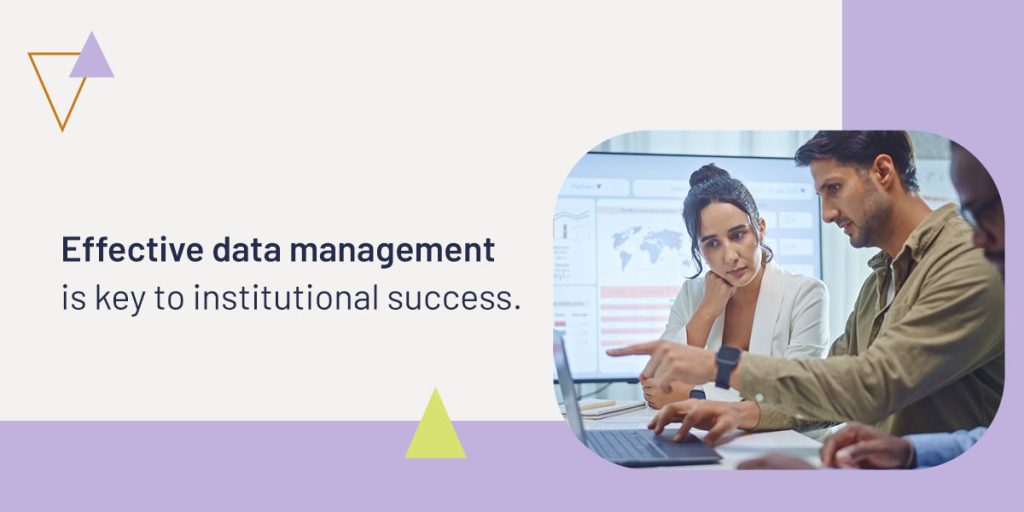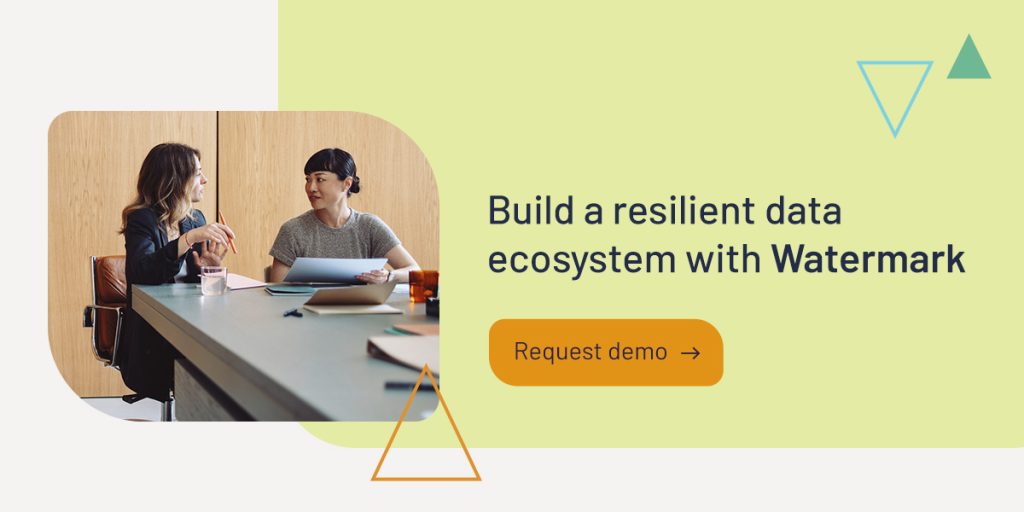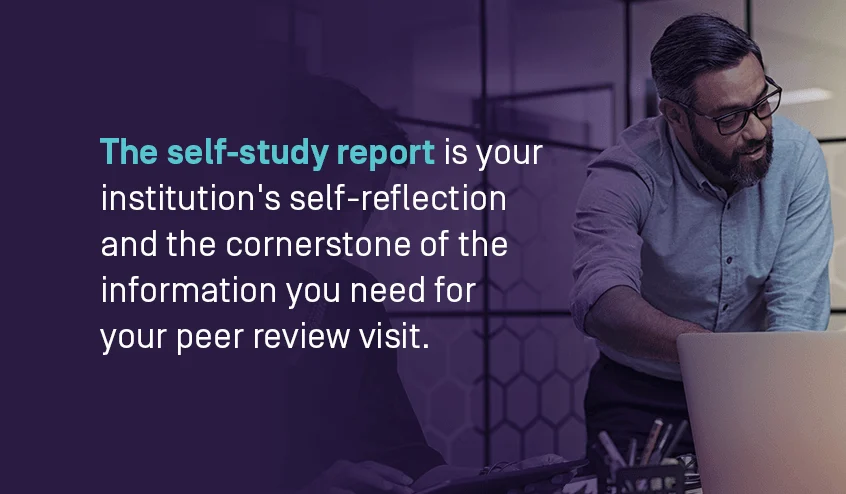
March 2025 saw unprecedented federal cuts to the National Center for Education Statistics (NCES). This federal data system has long been the backbone of higher education planning, benchmarking, and accountability. With sweeping changes to foundational data management structures, higher ed leaders must rethink their approach to data collection and reporting. By understanding the changes, acknowledging the challenges they represent, and tapping into alternative data sources, higher education institutions can build resilient data systems that support lasting institutional success.
What happened to the NCES in 2025?
In March 2025, the United States Department of Education laid off nearly all staff responsible for higher education data management at the NCES. This move reduced the NCES to a skeletal staff managing what hundreds of staff and thousands of contractors had previously done in collecting, analyzing, and disseminating data on education institutions nationwide.
While the Integrated Postsecondary Education Data System (IPEDS) remains operational, the loss of technical assistance, quality control, and longitudinal analysis impacts the reliability and usefulness of federal education data. Staple higher ed data sources like the College Scorecard, College Navigator, and the National Student Clearinghouse rely on NCES/IPEDS data, so these tools are also affected.
How does the downscaling of the NCES affect higher ed institutions?
The downscaling of the NCES, with its downstream impacts on other data sources, poses several challenges for higher ed institutions:
- Benchmarking: Institutions can no longer rely on consistent, comparable data from NCES to benchmark their performance against peer institutions. This means they must seek alternative benchmarking approaches to set goals, measure progress, and justify funding.
- Data quality and validation: As federal oversight and technical assistance wane, the risk of errors and gaps in education statistics grows, reducing confidence in reported outcomes based on NCES data.
- Longitudinal perspectives: Limitations on NCES staff and resources mean fewer updates, diminishing the capacity for longitudinal analyses to forecast enrollment and other trends.
- Equity: Disruptions in the flow of demographic and outcome data from NCES mean institutions must find other ways to monitor equity gaps and support marginalized student populations.
What alternative data sources can institutions use?
While recent changes may diminish the quantity and quality of NCES and IPEDS data, higher ed institutions can still rely on several alternative data sources to inform decisions. These include:
- Internal data collection: Strengthening internal data collection and analysis is more crucial than ever. Institutions must invest in accurate, comprehensive tracking and analysis of enrollment, retention, graduation rates, demographics, course completion, and learning outcome data. Valuable tools for internal data collection include online student satisfaction surveys and software for data visualization and predictive analytics.
- State-level data systems: Many states have higher education data warehouses or longitudinal data systems that add context and benchmarks to institutional data. For example, the Texas Higher Education Coordinating Board’s Texas Higher Education Data system provides comprehensive, publicly accessible data on enrollment, graduation, transfer rates, and workforce outcomes for all public institutions in Texas.
- Regional and multi-institution consortia: Joining regional and multi-institution consortia allows higher ed institutions to collaborate on data collection, define common metrics, and share benchmarking information. These partnerships restore some comparability to data and equip institutions to collaborate on best practices. For example, the Consortium for Student Retention Data Exchange brings together hundreds of institutions to share retention and graduation data, helping every member institution benchmark its progress and identify best practices to retain students.
- Professional associations and research organizations: Professional associations like the Association for Institutional Research (AIR) conduct sector-wide surveys, provide benchmarking tools, and share best practices for data collection and analysis. Institutions can use these resources to identify trends and align data practices with higher education industry standards.
How to address the data drought and drive institutional success
Effective data management is key to institutional success. These tips will help your institution find actionable insights, even when traditional data sources dry up.

Audit your data dependencies
Conduct an audit of all your institution’s processes that depend on the NCES or related data sources. Map out the dependencies, from benchmarking and compliance reporting to strategic planning, and identify data streams at risk of disruption. Then, prioritize the gaps you identify and plan to fill them by supplementing or replacing data with alternative sources.
Strengthen internal data infrastructure
Invest in your institution’s data collection, validation, and storage processes to cultivate data self-sufficiency. Establish clear data governance policies, schedule reporting cycles, and implement software to automate institution-wide data collection. Advanced analytics tools, especially predictive analytics, can provide actionable insights to fill the gaps left by federal longitudinal studies.
Build collaborative data networks
Add context to internal data by joining with like-minded institutions in regional consortia, state-level partnerships, or professional associations. These networks provide opportunities to advocate for consistent data standards that support benchmarking and shared learning about best practices.
Enhance transparency
Without federal data validation, transparency is key for maintaining stakeholder trust. Acknowledge your data sources and collection methodologies, and keep stakeholders updated with customized dashboards displaying key performance indicators (KPIs) like enrollment, graduation rates, and student demographics.
Prioritize equity
Use internal student demographic and outcomes data to monitor and address equity gaps. Implementing predictive analytics for student retention can help target interventions to diverse students who need support. Include student surveys with open-ended questions and apply AI-powered sentiment analysis to the resulting feedback to understand how diverse student populations experience your campus.
Upskill institutional research and data teams
As the role of the NCES diminishes, your institutional research and data teams take on growing responsibilities as custodians of data and strategic partners in decision-making. Upskill team members in advanced analytics, data visualization, and scenario planning through training by your technology partners. Organizations like the AIR also offer professional development opportunities to build these skills.
Leverage technology partnerships
Partner with trusted technology vendors to support data collection, analysis, and reporting. Look for a software partner who provides:
- Support with implementation and training.
- Seamless integration between new tools and your existing platforms.
- User-friendly tools for visualization, analytics, and reporting.
- Advanced analytics, including predictive and prescriptive analytics and sentiment analysis.
- Centralized, customizable dashboards to overcome data silos and support collaboration.
Build a resilient data ecosystem with Watermark
As traditional data sources dry up or disappear altogether, cultivating a robust data ecosystem for your institution is key to resilience. Ensure a steady flow of data-driven insights to guide your institution’s progress with the Watermark Educational Impact Suite (EIS).
This purpose-built higher ed software toolkit can help you:
- Automate the collection of quantitative and qualitative data across your institution.
- Eliminate data silos with seamless integration and centralized, customizable dashboards.
- Visualize datasets with intuitive tools and apply longitudinal and comparative analyses.
- Predict future scenarios and plan proactive strategies based on emerging trends.
Request a free demo of our EIS today to see the future of data at your institution.















































































































































































































































































































































































































